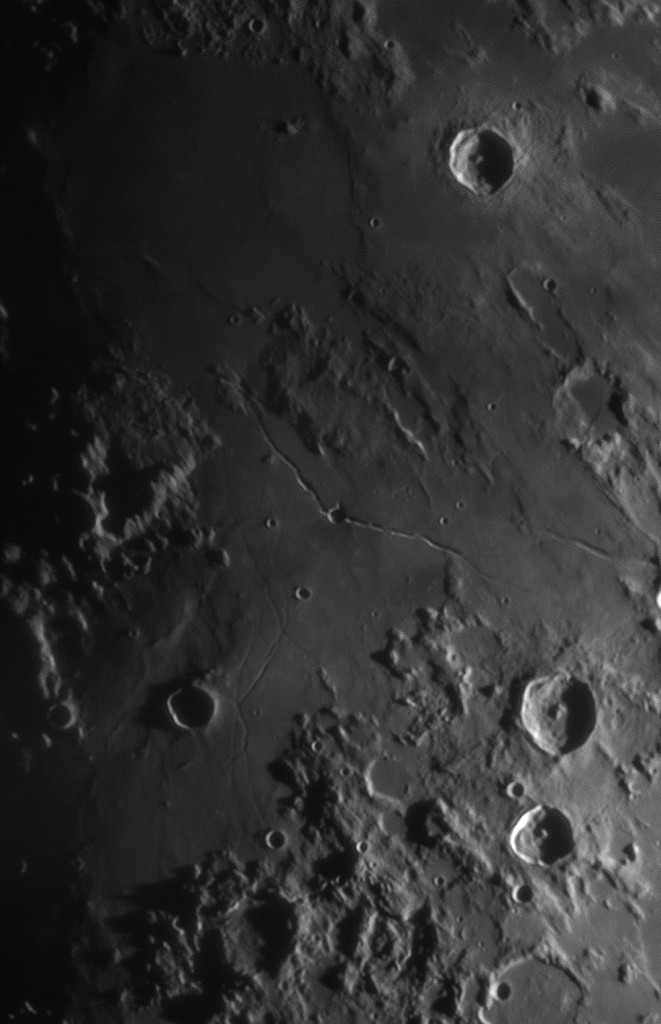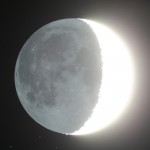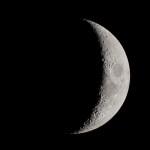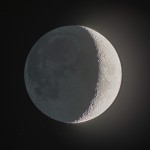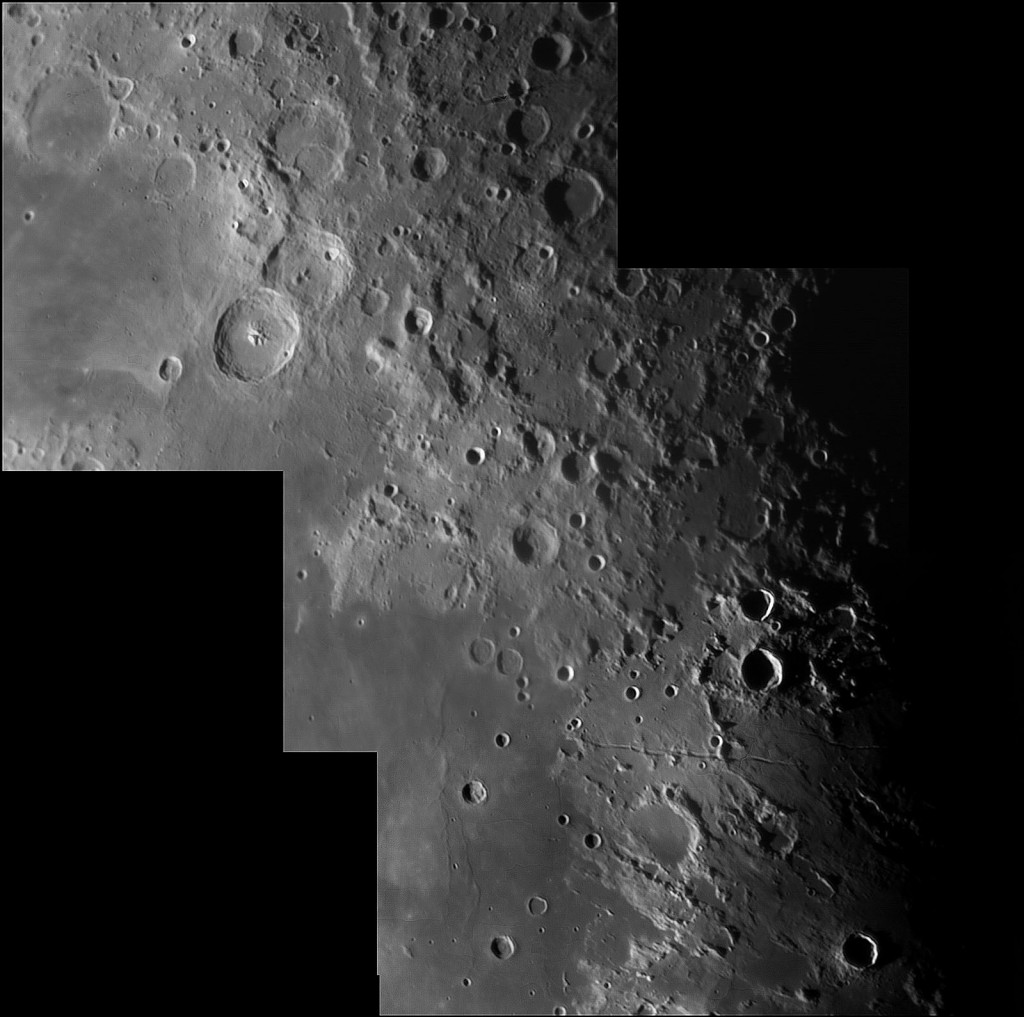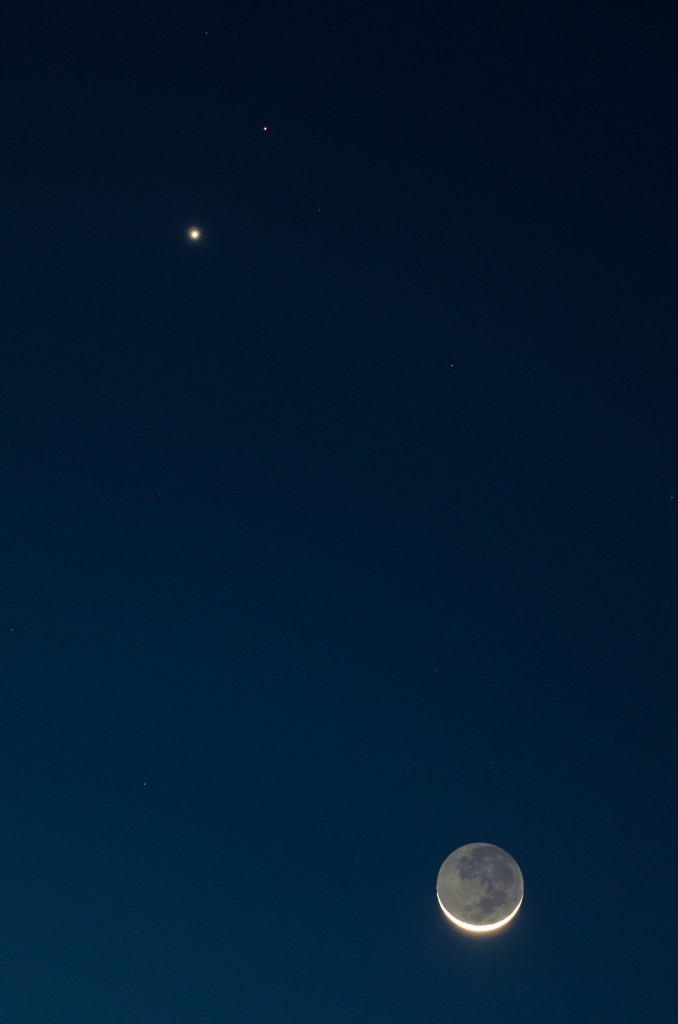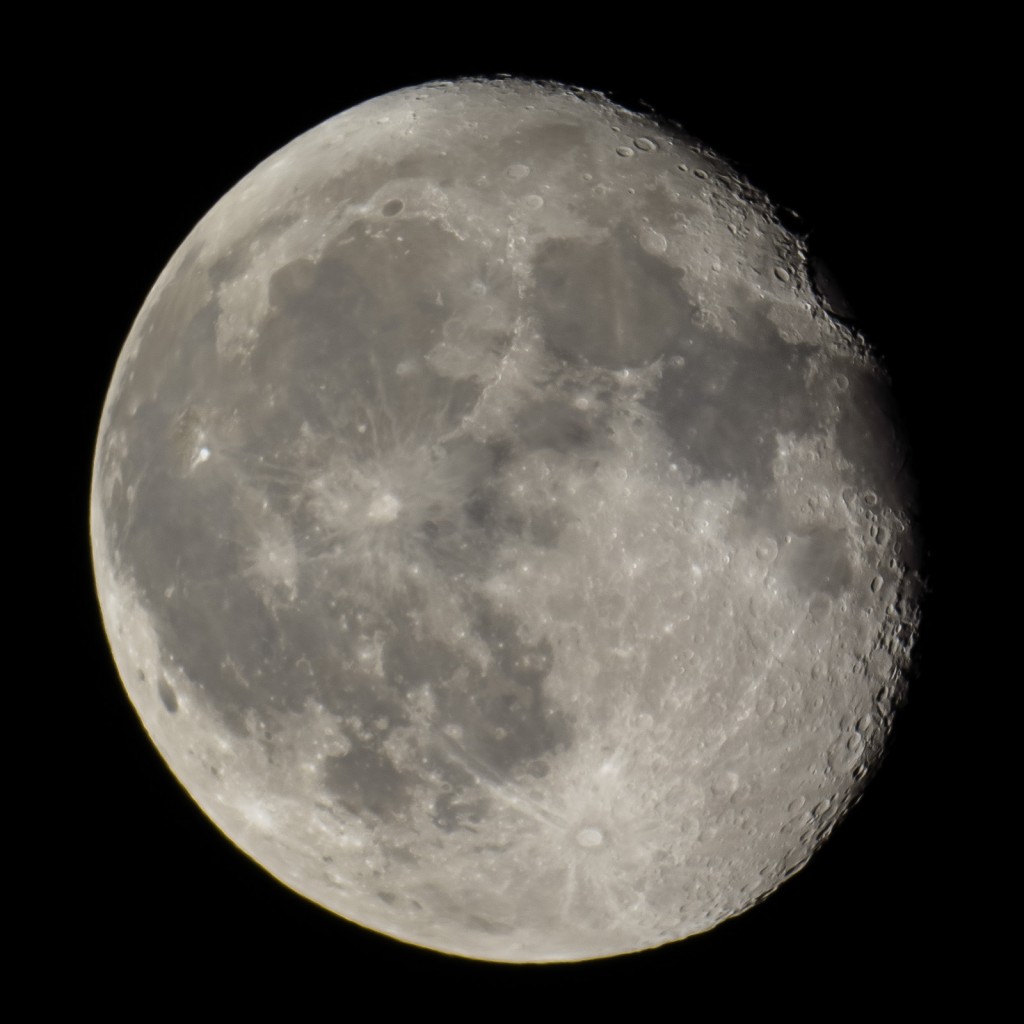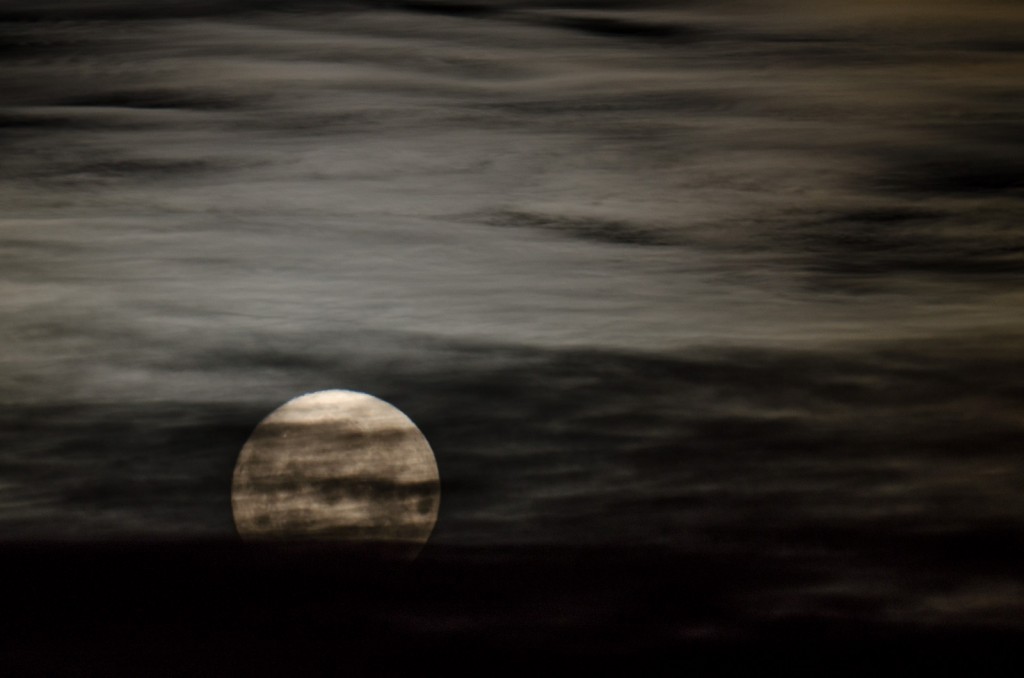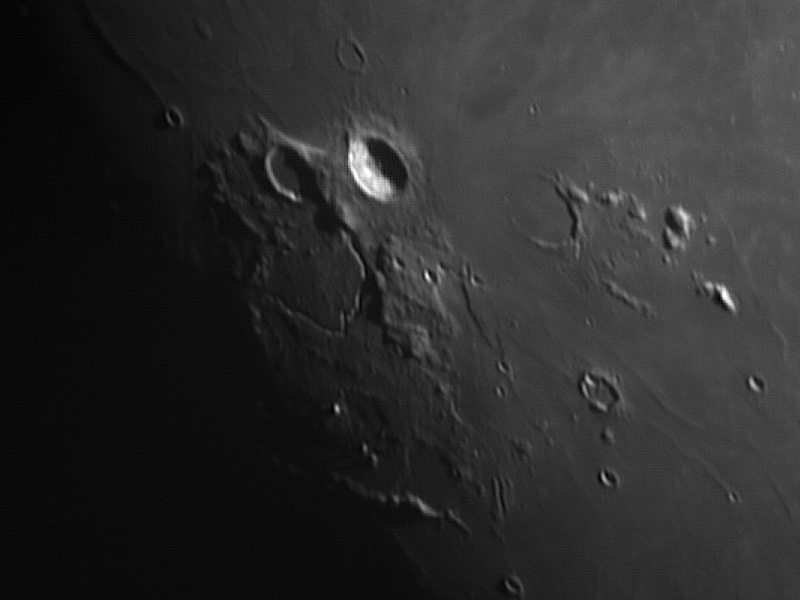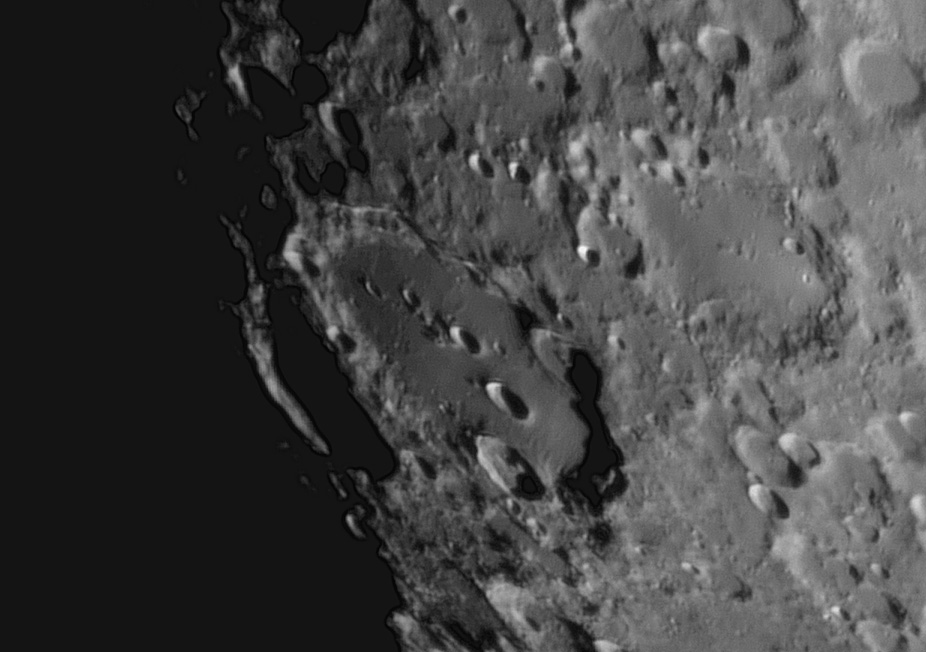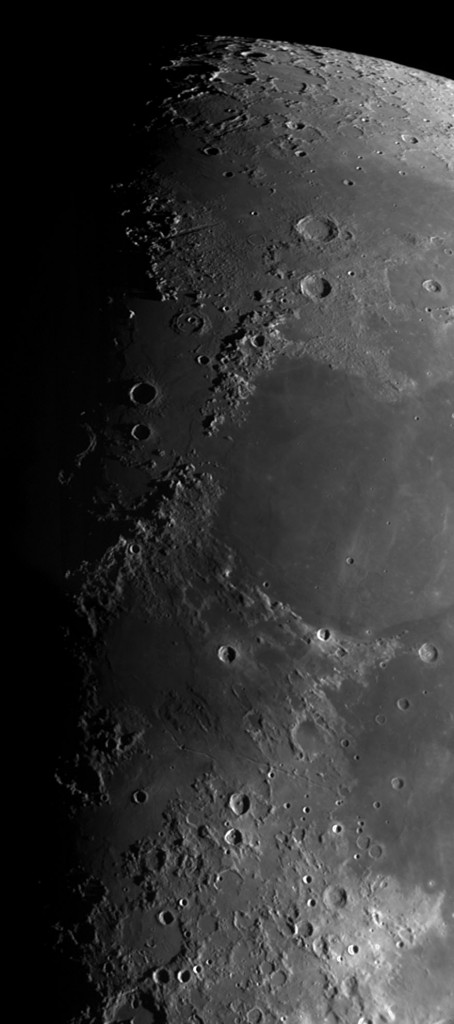Category Archives: lunar
The Bright and Dark side of the moon
On March, 24th the young moon was visible in the western sky. The clear air provided a good opportunity to capture the dark side of the moon which is actually illuminated by the earth which is big and bright in the lunar sky.
Lunar Terminator 2015-02-25
The moon is always a very regarding target. Even though the slow frame rate of the QHY5 (3FPS!) and the missing IR-Cut Filter do degrade the quality of the final image, some nice detail is visible in this mosaic of three individual avi files. 100 frames out of 400 were used for every frame.
The trio of Theophilus, Cyrillus und Catharina craters at upper left and the Ariadaeus Rille at lower right are prominent features visible in this image. On the floor of the Mare tranquillitatis at lower left some subtle mare ridges are vsible.
Moon, Venus and Mars
Tonight the western horizon is dazzlingly beautiful as the Moon, Venus and Mars shine brillantly in the clear air near the horizon.
The Moon 2015-02-06
Full Moonset
Aristarchus and Marius Hills
The region around the bright crater Aristarchus is a favorite part of the moon for me.
This is a detail from the image below, the terracing on the inside of bright Aristarchus is sligthly visible. The Schröter Valley is a channel created by lava flows.
Clavius et. al.
Shortly after the first quarter the crater Clavius begins to emerge from the shadows:
January Moon
A partial mosaic of the lunar terminator:
From Clavius to Schiller
This is a two-frame mosaic taken with a DMK21 camera and an Astro-Professional 80mm ED refractor:
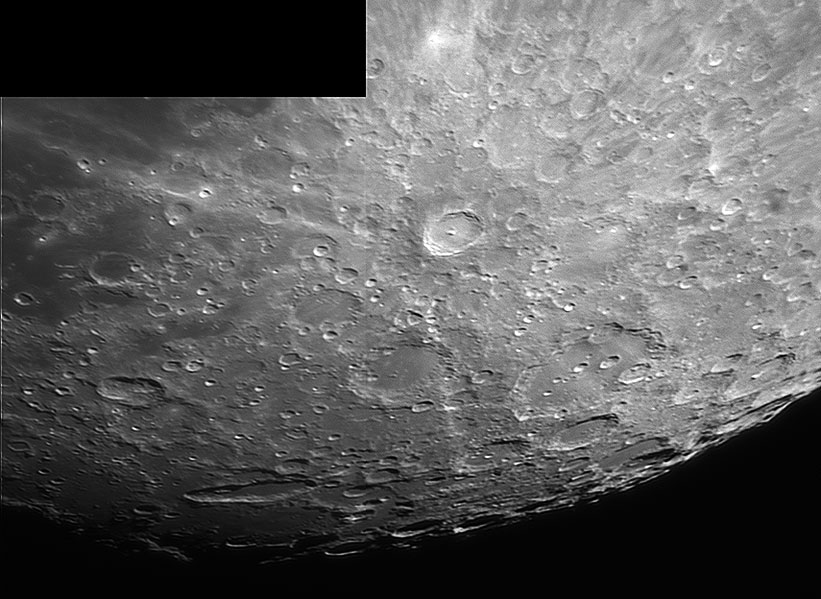
The very obvious crater in the middle of the mosaic is Tycho, it is relatively young and therefore the ejecta rays can still be seen brightly across the lunar landscape. Please note the dark area directly around Tycho which is also caused by ejecta of the impact.
To the lower right is the beautiful crater Clavius which has a nice curve of smaller craters on the floor. To the lower left you can see the very elongated crater Schiller which was produced by an oblique impact. Read More
